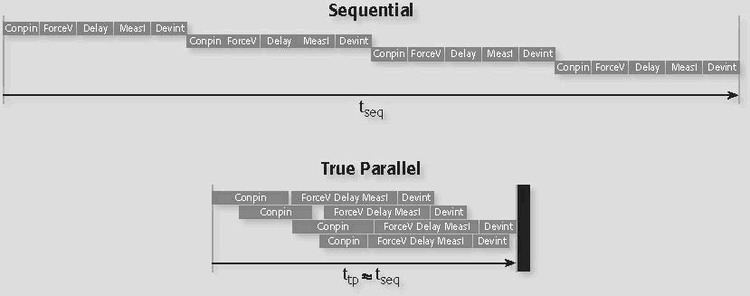 | ||
The parallel parametric test is an emerging strategy for wafer-level parametric testing that involves concurrent execution of multiple tests on multiple scribe line test structures. If offers the potential for increasing test throughput with existing test hardware, in response to market pressure on fabs to minimize test times. The figure illustrates the differences in the amount of time required to complete tests sequentially as compared to the same tests in parallel.
Advantages
The potential advantages of parallel parametric testing include:
References
Parallel parametric test Wikipedia(Text) CC BY-SA
